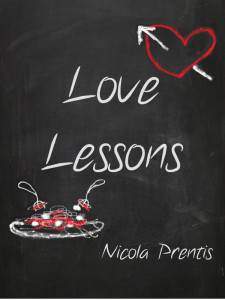The easy guide to self-publishing
The easy guide to self-publishing. Self-publishing for fiction authors has become almost the expected route to getting books ‘out there’. It’s hard not to see the appeal of beating the typical royalties of 8-15% on print and 25-50% on ebooks in favour of the 35% or 70% net an author can get from Amazon. An even bigger appeal is that you keep your copyright instead of giving it up forever and surrendering your work to the mercy of the publisher who can stop promoting it at any time, effectively killing your book.
In ELT, we’re starting to see the rise of self-published resource books and professional development books. Course books and Graded Readers present a bigger problem as their target users are students while the buyer are schools or teachers.
It’s only a matter of time before the self-published ELT author becomes serious competition for the big publishing houses but, if you’re thinking of giving it a go, you need to know how to get from a doc on your laptop to a sellable product. I’ve just self-published a romance novel set in the world of ELT, Love Lessons, and want to share the steps I took.
The manuscript
Typing ‘The end’ is just the beginning. However good a writer you are, whatever you’ve just finished is nowhere near good enough to sell. Stephen King puts his work away for 6 weeks and writes something else before starting the job of content editing. He aims to cut it by 10%. He’s Stephen King; he’s right. You can always say something more concisely and make it better. Get the opinions of other people you trust at this stage. If they don’t understand something, take it as an opportunity to improve the book, not to defend it.
Once you’ve trimmed and reworked your book, it needs a copy edit. You have hopefully caught most of your obvious spelling errors and typos at the previous stage but, if you’re not a trained copy editor, it’s highly unlikely you have correctly placed all your commas and hyphens. However hard you try, you’ll never get them all. Even one of the most successful self-published authors, Amanda Hocking, despaired that her ebooks were full of errors. I went through Love Lessons many times, editing it on paper where it is easier to spot errors. Even then, I was flicking through the ebook the other day and noticed I hadn’t been consistent with how I denoted times — 8am or 8 a.m.
If you’re approaching your book as a serious business, hiring a copy editor might be worth it. Even so, the doc itself needs cleaning up before it’s turned into ebook format. Keep any About the Author info pages for the back of the book, or the blurb, because Amazon lets potential buyers read the first 10% of the book and you want readers to see the product as quickly as possible. Every second someone is clicking through extraneous material is time for them to get bored and leave without buying.
The cover

Think about books that catch your eye when you’re zooming around Amazon. Bright colours and designs that stand out when they’re thumbnail size are essential. Make sure your title and name are in big fonts so they’re not lost in the thumbnail. Again, this might be time to hire a professional cover designer, but if you’re doing it yourself, you don’t necessarily have to be able to use design programs. Believe it or not, you can create a cover in Word. 600 x 800 is sufficient size for ebook covers but print needs to be much bigger at 1800 x 2700. I made the cover for Love Lessons myself using a Creative Commons background photo from pixabay.com. I uploaded it into ipiccy.com to resize and add text and then drew the details on top in Paint.
The format
If your book contains lots of images, for example, like a course book, the simple process I’m about to describe won’t suit you. But for mostly text-based books, it’s pretty straightforward. The first thing you have to do is create a Table of Contents. Microsoft word will auto generate one for you as long as you’ve given each chapter heading a title using Heading 1 in the Styles tab. Then:
- Go to References and choose Table of Contents.
- Select the format you want from the drop down box.
- The chapter titles will be the headings you’ve used Heading 1 for. If you have subsections, Heading 2 will be indented in the chapter titles and so on.
- Make sure you update the table if you make any additions or deletions to your doc after this.
- Insert a bookmark saying “toc” in the first line of the Table of Contents so Kindle knows where to find it later on.
Since Amazon sells 70% of ebooks, and it’s really easy to format your book using their tools, this is the best way to get your book out where customers can easily download it. If you want to put it out anywhere else, or sell it from your own site, there are other steps you need to do to convert your doc to an EPUB or MOBI file that’s readable on all devices.
Note that the price you set if you sell from your own site using PayPal (and want to make more money than your royalty from Amazon) has to take into account the fee Paypal takes when a payment is processed and any fees for transferring the money to your bank account. Plus, there are the VAT headaches involved now in selling online within the EU which can be solved by manually emailing the book to every customer yourself. Fine, if you’ve got the time and not many customers but probably not worth the hassle otherwise for the extra few cents.
To upload your book, first create an Amazon Kindle Direct author account and profile here. Then go to your bookshelf and click on ‘create new title’ to be walked through the very simple steps. Your book takes 24 hours to go live and you can preview it from within the platform itself, so you don’t need to own a Kindle or even download the Kindle app to your device. Any time you spot mistakes, you simply re-upload a corrected version which will replace the old one 24 hours later. Done!
Or not …
Selling it
Just because you’re now in the world’s largest bookstore doesn’t mean anyone will know you’re there. Amazon will not be suggesting your book as ‘Customers who bought this also bought’ or anything else that might raise visibility. The best way to at least start the visibility ball rolling is to enrol in KDP Select, which means selling exclusively on Amazon for a rolling period of 90 days, and putting the 5 promotional days into action. Your book will be free during this time and, if you can get enough people to download it, it will rise to the top of the Free list and may then get noticed and people will start buying it when the promo ends. How to market the book via social media and any other means you have at your disposal is where the really hard work starts, I’m afraid, and I’ve yet to crack it myself. When I do, I’ll write another post!





7 Responses
Eric Roth
Thank you for sharing your experiences as a self-publisher. Research often makes life easier, and self-publishing a book follows that general rule. I read the following three books and they all provided quite valuable - literally. The Well-Fed Self-Publisher: How to Turn One Book into a Full-Time Living by Peter Bowerman (2006) Self-Publishing Textbooks and Instructional Materials: A Practical Guide to Successful – and Respectable – Self-Publishing by Franklin H. Silverman (2004) Writing and Developing Your College Textbook: A Comprehensive Guide to Textbook Authorship and Higher Education Publication by Mary Ellen Lepionka 2nd Edition (2008) Of course, there are newer versions now available - plus the inspiring ELTJAM website. While the process of physically creating a book and placing it on Amazon has become far easier, I would echo your observation that mere presence on Amazon does guarantee an audience even for quality books. Kindle can be a very powerful marketing tool, but the market is far more competitive today than in 2011 and 2012. In addition, I've found sharing sample chapters to be an effective, friendly strategy - especially for EFL teachers looking for quality materials. Just as Amazon allows you to "look inside", offering free chapters that can be easily downloaded can help spread the news. For instance, Compelling Conversations website offers free chapters from four different titles in the fluency-focused series, including a new title specifically for English language learners in Japan. Of course, giving presentations at TESOL and leading teacher training workshops is also recommended to promote independent EFL and ESL textbooks. Receiving favorable reviews in magazines covering the English industry certainly helps too. Finally, don't overlook the power of word of mouth marketing. My original book Compelling Conversations still sells a decent number of both class sets and individual purchases almost a decade after its release. Strong customer reviews on Amazon - and there are now over 100 - has really helped introduce the book to new audiences. http://www.amazon.com/Compelling-Conversations-Questions-Quotations-Timeless/dp/141965828X/ref=sr_1_1?ie=UTF8&qid=1441900876&sr=8-1&keywords=compelling+conversations+questions+and+quotations+on+timeless+topics When someone contacts me to place an order, share their teaching experiences with a book, or praises Compelling Conversations, I often ask them to consider writing a brief review somewhere. Amazon seems to be the favorite destination. Good luck with your latest book and thank you for providing a quick primer on how to self-publish a novel or EFL textbook.
11/09/2015
Karen White
Great piece, Nicola. I'm currently writing my first blog post and am finding that more challenging than I thought in terms of keeping it succinct! Your Amazon advice echoes what we do at ELT Teacher 2 Writer in terms of publishing our How To ebooks for ELT writers and we find it an easy platform to use. In addition to Amazon, we also publish on Smashwords, which allows customers to download purchases in a variety of formats, including PDF if the publisher has made that an option. Another pro of Smashwords (and probably other platforms like it) is that it makes titles available to readers in markets not covered by Amazon, which is great for us in the international world of ELT. It also feeds titles through to iBooks, Kobo, etc via its premium service. The main drawback to Smashwords is the strict formatting restrictions it puts on anyone wanting to publish with them. No text bigger than 18pt; no tables; no tabs; no lists of bullet points. Which probably isn't too much of a problem for a fiction writer, but for anything else it's a bit of a nuisance. And if the formatting isn't exact, you can't get in to the premium service, and then on into iBooks etc. I'm sure online publishing platforms will continue to improve, which will be great news for any self-publisher. In the meantime, we're all searching for the holy grail in marketing terms, so I'm looking forward to reading your post if you find it first!
11/09/2015
Karen White
I should of course have included a link to our titles on Smashwords ... https://www.smashwords.com/books/byseries/2754
11/09/2015
Nicola Prentis
Very interesting. Funnily enough I saw mention of that book just today somewhere! The thing I find hard is getting people to review books, even if they liked it. How do you go about getting reviews from a) people you know b) random customers?
13/09/2015
Nicola Prentis
I didn't know that about the formatting rules for Smashwords. So what do you do if you really need bullet points? (thinking of a future project)
13/09/2015
Karen White
You type a dash then a space. Doesn't look as good, but does the job.
14/09/2015
Eric the sceptic
Apologies for the delayed response. You've nailed the problem. The best way I've found, so far, to solicit reviews remains speaking at CATESOL and TESOL conferences and encouraging readers to share their positive experiences. Sometimes I also give out exam/review copies and encourage teachers/administrators to write reviews. You can also just ask fellow English teachers and friends to say a few words because word of mouth remains the best (often only!) marketing effort. I also encourage - in my later books - readers and students to write reviews in the back. That seems to have helped, and I will be adding such "encouragements" to future books. BTW, one way to reduce "reviewer anxiety" is to note that a short, one- paragraph praising one specific exercise/quote/feature helps other English teachers out. Many teachers like to help and want to share their experiences, but feel intimidated or doubt that they have anything new to contribute. I always assure teachers that each class, each student, and each teacher remains unique. Just write a few sentences about the class you taught, identify the context, and share your experience in a few words. This small pep talk often works. Sometimes, of course, the magic doesn't work. Life is often hectic, and many EFL teachers find it difficult to realize all of their good intentions. We're only human - and that's okay too.
19/09/2017